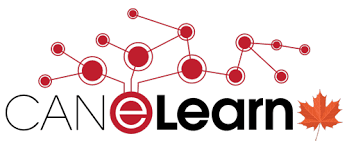Suggested Read Aloud: I Will be Fierce
by: Bea Birdsong (2019)
 Is my 6th grader too old to cuddle with and share a great story? Teachers and parents are well aware of the benefits of reading out loud to children, especially young children; “however what about those great big hulking, 9-10 year olds?” (Gutshall, 2009). I ask you to consider: the needs of upper elementary age students. Students 9-13 and beyond most certainly need nurturing and caring! According to Christine Finnan, who wrote a book titled: The Upper Elementary Years: Ensuring Success in Grades 3-6, which is cited in Gushall’s article, “upper elementary aged children have rather basic desires; for accomplishment, affirmation, belonging and connection; academic, social and physical engagement” (Gutshall, 2009). Don’t we ALL have these same needs! I know I do! Cuddling with my kids; regardless of their ages still means the world to this empty nester!
Is my 6th grader too old to cuddle with and share a great story? Teachers and parents are well aware of the benefits of reading out loud to children, especially young children; “however what about those great big hulking, 9-10 year olds?” (Gutshall, 2009). I ask you to consider: the needs of upper elementary age students. Students 9-13 and beyond most certainly need nurturing and caring! According to Christine Finnan, who wrote a book titled: The Upper Elementary Years: Ensuring Success in Grades 3-6, which is cited in Gushall’s article, “upper elementary aged children have rather basic desires; for accomplishment, affirmation, belonging and connection; academic, social and physical engagement” (Gutshall, 2009). Don’t we ALL have these same needs! I know I do! Cuddling with my kids; regardless of their ages still means the world to this empty nester!
As if that argument is not convincing enough here’s yet another sound reason to read aloud with your kids:
Surely, we all want our kids to be kind, compassionate and tolerant. “Culturally authentic children’s books… are a valuable resource because they teach tolerance in a society that is steadily becoming more diverse. (Morgan, 2009) Sharing books with diverse and inclusive themes including these listed below helps to prepare your child to be a confident citizen of the world, who prioritizes family and family values.
- • COURAGE,
- • FEARS,
- • KINDNESS,
- • DIVERSITY,
- • INCLUSION,
- • LGBTQIA,
- • STUDENT VOICE,
Discussing these themes in a trusted, caring environment with trusted adults whether at home or school is “important not only for minority students but also for [all] mainstream students” (Morgan, 2009) as well as for upper elementary aged kids. Conversations initiated by parents proactively with the help of a great read-aloud helps to prepare students to confidently to voice their thinking, values and what matters most to them; especially when they discuss these ideas with their friends. In a society, where young people are bombarded with information will we choose to proactively prepare our kids by modelling tolerance. I urge you – take time to cuddle with your kids and share great books!
References:
Birdsong, B. (2019). I will be fierce. New York, NY: Roaring Brook Press.
Gutshall, A. (2009). 4th grade readers not too old to snuggle. Phi Delta Kappan, 90(6), 435-437. Retrieved from https://doi-org.proxy.queensu.ca/10.1177/003172170909000612
Morgan, H. (2009). Using read aloud with culturally sensitive children’s books: A strategy that can lead to tolerance and improved reading skills. Reading Improvement, 46(1), 3-8. Retrieved from http://search.ebscohost.com.proxy.queensu.ca/login.aspx?direct=true&db=a9h&AN=37551995&site=ehost-live
 We’ve started teaching students in our LLC (Library Learning Commons) about the power of
We’ve started teaching students in our LLC (Library Learning Commons) about the power of 

 Thank you Huband Park Families for contributing to the overwhelming success of our book fair!
Thank you Huband Park Families for contributing to the overwhelming success of our book fair! Thank you also to the students and parent volunteers
Thank you also to the students and parent volunteers

 What an incredible tribute and artistic representation for Orange Shirt Day by Carey Newman (Coast Salish/Kwagiulth)
What an incredible tribute and artistic representation for Orange Shirt Day by Carey Newman (Coast Salish/Kwagiulth) JM – is the first student in the Library Lunch Bunch to solve the cube…. and demonstrated exceptional ‘stickwithitness’, initiative, problem solving and attention to detail to persist and solve the cube. Pictured here was the celebratory moment… of achievement! Congratulations!
JM – is the first student in the Library Lunch Bunch to solve the cube…. and demonstrated exceptional ‘stickwithitness’, initiative, problem solving and attention to detail to persist and solve the cube. Pictured here was the celebratory moment… of achievement! Congratulations!
 Together, we can ensure our
Together, we can ensure our  Does it come as any surprise that student engagement soars when your kids get to select their own books? It shouldn’t! Even before our kids headed to Kindergarten, as preschoolers we’d head each week to the Comox branch of the Vancouver IslandPublic Library. As parents, bedtime was one of our favourite times of the day, as we’dcuddle together and share newly, selected library books or familiar favourites, which we’d read again and again!
Does it come as any surprise that student engagement soars when your kids get to select their own books? It shouldn’t! Even before our kids headed to Kindergarten, as preschoolers we’d head each week to the Comox branch of the Vancouver IslandPublic Library. As parents, bedtime was one of our favourite times of the day, as we’dcuddle together and share newly, selected library books or familiar favourites, which we’d read again and again!
 Is my 6th grader too old to cuddle with and share a great story? Teachers and parents are well aware of the benefits of reading out loud to children, especially young children; “however what about those great big hulking, 9-10 year olds?” (Gutshall, 2009). I ask you to consider: the needs of upper elementary age students. Students 9-13 and beyond most certainly need nurturing and caring! According to Christine Finnan, who wrote a book titled: The Upper Elementary Years: Ensuring Success in Grades 3-6, which is cited in Gushall’s article, “upper elementary aged children have rather basic desires; for accomplishment, affirmation, belonging and connection; academic, social and physical engagement” (Gutshall, 2009). Don’t we ALL have these same needs! I know I do! Cuddling with my kids; regardless of their ages still means the world to this empty nester!
Is my 6th grader too old to cuddle with and share a great story? Teachers and parents are well aware of the benefits of reading out loud to children, especially young children; “however what about those great big hulking, 9-10 year olds?” (Gutshall, 2009). I ask you to consider: the needs of upper elementary age students. Students 9-13 and beyond most certainly need nurturing and caring! According to Christine Finnan, who wrote a book titled: The Upper Elementary Years: Ensuring Success in Grades 3-6, which is cited in Gushall’s article, “upper elementary aged children have rather basic desires; for accomplishment, affirmation, belonging and connection; academic, social and physical engagement” (Gutshall, 2009). Don’t we ALL have these same needs! I know I do! Cuddling with my kids; regardless of their ages still means the world to this empty nester!

 Common Sense Education is a website aimed at helping educators facilitate conversations with their students about digital citizenship. The website’s aim is to “help students use technology responsibly to learn, create, and participate” with ever increasing capacity with their information and digital literacies.
Common Sense Education is a website aimed at helping educators facilitate conversations with their students about digital citizenship. The website’s aim is to “help students use technology responsibly to learn, create, and participate” with ever increasing capacity with their information and digital literacies.  Mini Inquiry Question:
Mini Inquiry Question: 
 2019 Digital Learning Symposium
2019 Digital Learning Symposium

